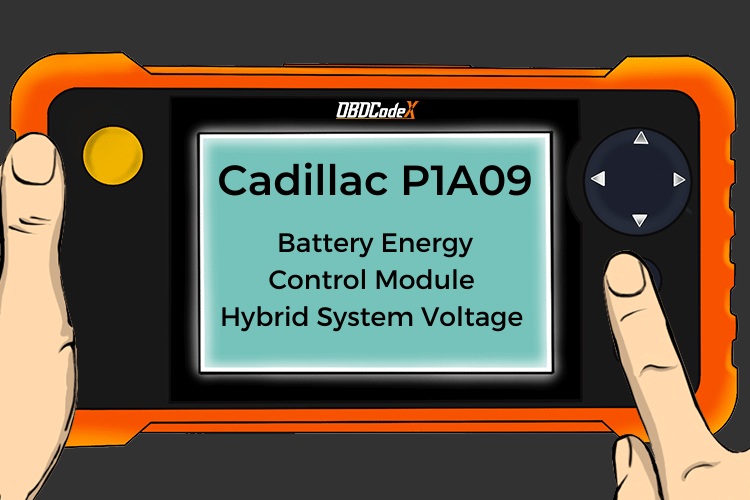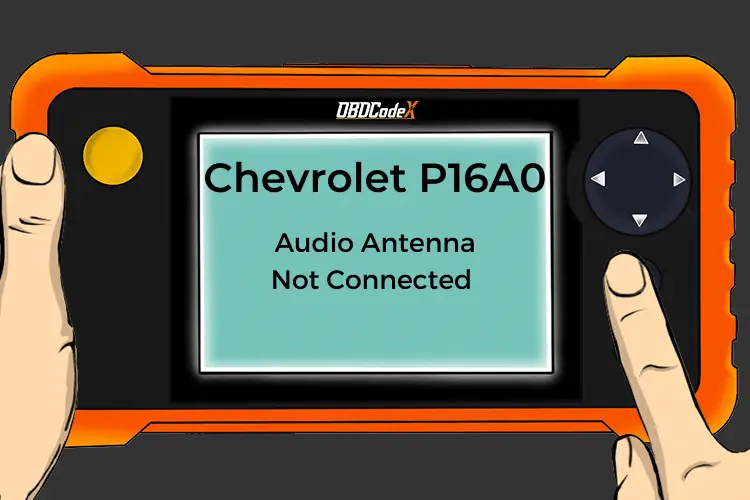P053A: Positive Crankcase Ventilation Heater Control Circuit /Open
Is your scanner showing P053A?
No worries. We'll show you what it means and how to deal with it.
P053A: Positive Crankcase Ventilation Heater Control Circuit /Open
OVERVIEWWhat Does The P053A Code Mean?
The PCV (Positive Crankcase Ventilation) is technically a system designed to remove harmful vapors from the engine and also, to prevent the said vapors to be ejected into the atmosphere. It is also able to do this by the use of manifold vacuum in order to suck the vapors from the crankcase in the intake manifold.
The crankcase vapors are led through the combustion chambers alongside with the fuel and air mixture to be burned. The PCV valve controls the circulation within the system, which makes it an effective ventilation system for the crankcase and also a pollution management device.
This PCV system has become the standard for all new vehicles since the 1960’s and variety of systems have been created throughout the years, but the main function of it is the same. There are two main kinds of PCV systems, which are open and closed systems.
Technically both function similarly, however, since the use of the closed system in 1968 it has been proven to be more effective for air pollution control.
With the aid of a heater system/element, the PCV system is able to remove moisture, which is considered to be one of the major contaminants within the engine. As the engine functions, it generally creates heat that is able to burn off most of the moisture in the system.
However, when it cools down, this is where condensation occurs. There are specific additives in engine oils, which suspends the water molecule caused by the moisture. However, in due time it eventually exceeds its capacity and the water corrodes the metal parts of the engine that damages it to an extent.
The ECM (Engine control module) is responsible for monitoring and adjusting the positive crankcase ventilation heater control circuit. If the P053A code is active, the ECM has detected a general malfunction in the PCV heater control circuit and/or an open in said circuit.
What Are The Symptoms Of The P053A Code?
Symptoms of a P053A diagnostic code may include:
- Excessive oil consumption
- Sludge in engine oil
- Engine misfire
- Reduced fuel economy
- Engine oil leak
- A failed PCV valve may cause noise such as a whistle, whine, or other low moaning noises.
What Are The Potential Causes Of The P053A Code?
Causes for this P053A positive crankcase ventilation code may include:
- PCV valve that stuck open
- Wiring issue causing an open/short/out of range condition in the positive crankcase ventilation heater control circuit
- ECM (engine control module) issue (i.e. internal short, open, etc.)
- Contaminated inline PCV air filter (possibly internal)
- Oil contamination on electrical connector and/or harnesses involved causing electrical connection issue
- PCV heater defective
How Serious Is This P053A Code?
In this case, medium-high severity, which is why dealing with the problem is crucial, because once the PCV system fails due to sludge build up and oil leaks occur, you could cause damage to your engine to a certain extent.
A plugged PCV valve due to sludge will cause many other possible engine problems. Pressure will start to build that could cause the gaskets and oil seal to fail.
How Can You Fix The P053A Code?
The first step in the troubleshooting process for any malfunction is to research the Technical Service Bulletins (TSB) for known issues with the specific vehicle.
Advanced diagnostic steps become very vehicle specific and may require the appropriate advanced equipment and knowledge to perform accurately. We include basic steps below but refer to a vehicle year/make/model/powertrain specific repair guide for specific steps for your vehicle.
Basic Step #1
There are several ways to check if the PCV valve is working correctly and you will decide which method is easier for you, however, it is important that the engine should be idling regardless of what method you use. Here are two methods of checking if the valve is functional:
Method 1: Detach the PCV valve from the valve cover with the hose still intact, and then carefully place your finger over the open end of the hose. If your valve is properly functioning, you will feel a strong suction sensation. Afterwards, try to shake the valve and if it rattles that means that there aren’t anything that obstructs its pathway. However if there’s not rattling sound that came from it that means it been damaged.
Method 2: Remove the cap from the oil filler hole on the valve corner then place a stiff piece of paper on top of the opening. The paper should be sucked in place against the hole in seconds if your valve is functioning properly.
If you find that the valve is not functioning properly, you shouldn’t immediately buy a replacement. Instead, try cleaning it by using some carburetor cleaner, sparingly, especially in areas with significant contamination. Make sure to verify any present discolouration and/or gummy deposits are removed, which would be a sign that the valve is thoroughly cleaned.
Basic Step #2
Verify the harness involved in the PCV system’s circuit(s). Given the fact that the PCV systems are subject to oil present within the system, one of the possible causes is oil contamination. If oil is leaking on harnesses, wires and/or connectors, this could cause electrical issues, because the oil can and will overtime eat away at the important wire insulation.
So, if you see anything of this nature, make sure to repair it adequately to ensure a good electrical connection within the positive crankcase ventilation heater control circuit.
This article is strictly for information purposes only and the technical data and service bulletins for your specific vehicle should always take precedence.
Recommended Parts
Below are some recommended auto parts to help you address the trouble code affecting your vehicle and get it running smoothly again:
>>> PCV Valve
>>> WORKPRO 582-piece Crimp Terminals, Wire Connectors, Heat Shrink Tube, Electrical Repair Kit
>>> ECU
>>> Inline PCV Air Filter
Note: During the purchasing process, please check carefully whether the part you want to buy fits your car!
Reference Sources
Diagnostic Trouble Code (DTC) Charts and Descriptions for P053A – Page 86.




